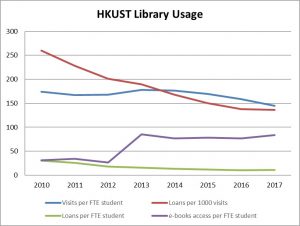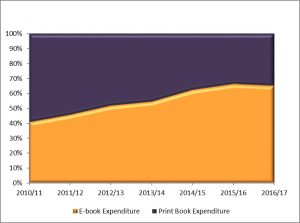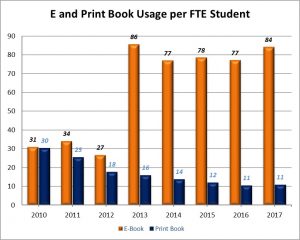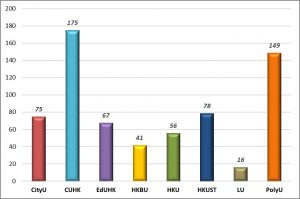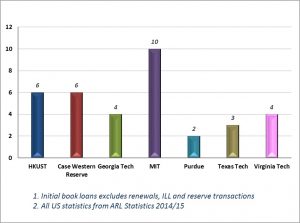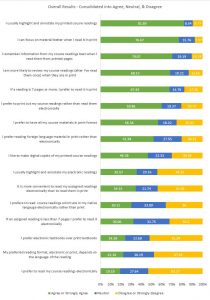In 2017, HKUST Library decided to study trends in our users’ reading and borrowing behavior. We found the following:
Overall conclusion of this study:
Without doubt, HKUST students are moving from print books to e-books.
Leveraging technology changes, the Library has played an important role in facilitating such format shift by introducing new acquisition methods and budget re-allocation – more details in the 2018 September Library Newsletter
In September 2017, in conjunction with the above investigation, the Library also conducted the Academic Reading Format International Study (ARFIS), an international project, designed to investigate university students’ attitudes and behaviors in regards to academic reading. So far, 32 different countries and territories have participated.
All UGs and PGs were invited to participate, 1,136 students responded (7.67% of enrolled students).
To summarize the HKUST ARFIS findings:
- Overall print preference for course readings
- Ease of highlighting, annotating
- Ability to focus, and easier on the eyes
- Students like both formats & will go to the trouble to format shift to have both
- If course readings are electronic, around 60% like to print them out
- If course readings are in print, around 47% like to make digital copies
- Some acceptance of electronic readings, especially for readings under 7 pages
- Greater convenience
- Perceived environmental friendliness
Themes in comments:
- Course readings not just refer to textbooks; but also notes from lecturers; pdfs made available on the course websites, etc.
- Printing out assigned readings is viewed as costly
- Sustainability – printed copies seen as less environmentally friendly
- Making annotations is very important & easier for students with print format
- Reading e-copies can result in eye strain
Some more detail in September 2018 Library Newsletter.
Go Back to page Toplast modified 23 October 2018


